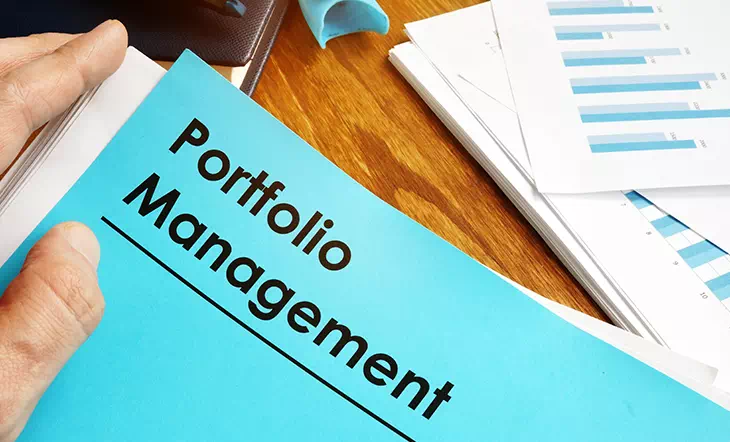The possibility of losing money on an investment or business venture is known as a financial risk. Some of the more common financial risks include credit risk, liquidity risk, operational risk, market risk, and legal and regulatory risks.
Financial uncertainties are a part of life where unexpected events, like a job loss, market crash, or legal issue, could derail your financial plans. Recent statistics from a Gallup poll paint a clear picture: over 55% of Americans rate their financial situation as “only fair” or “poor,” and half report that it’s getting worse.
What makes this even more concerning is the persistent gap in financial knowledge.
The P-Fin Index, which measures financial literacy in the U.S., shows that for eight straight years, the average score has hovered around just 50%. In other words, half the population may not fully understand the risks they face or how to manage them.
This knowledge gap can leave individuals and businesses vulnerable to sudden setbacks such as job losses, market downturns, and legal or operational challenges. A financial advisor can help devise suitable financial risk management strategies that can help anticipate potential risks, minimise losses, and stay on course toward financial targets.
This article outlines essential financial risk management strategies for personal finances that can help you build resilience against various financial risks and mitigate them, and how to manage risk.
Table of Contents
Types of financial risks you may face
There are various types of risks that individuals and businesses commonly face that need to be identified first before a suitable risk management strategy can be deployed for your specific circumstances. Some of these risks are:
- Market risk: The potential for financial loss due to changes in external factors such as stock prices, interest rates, or currency fluctuations is known as market risk. If you’ve seen your investment portfolio shift due to economic conditions, you’ve encountered this type of risk. It can directly impact investment returns, savings, and business revenues, particularly if your income or operations are closely tied to market dynamics.
- Credit risk: If there is a possibility that a borrower or counterparty may fail to meet their financial obligations, it may be deemed as credit risk. For individuals, this may involve unpaid personal loans or credit card debt. For businesses, credit risk can result in significant losses if clients or partners cannot fulfill payment commitments.
- Liquidity risk: If you have insufficient access to cash or easily convertible assets during times of need, this situation is known as liquidity risk. This can be particularly challenging during emergencies, when funds are required immediately, but are tied up in long-term or illiquid investments. For both individuals and businesses, effective liquidity planning is essential to maintaining financial flexibility.
- Operational risk: This risk stems from internal processes, systems, or human error. Examples include calculation mistakes, technology failures, or procedural breakdowns. While these issues may seem minor, they can cause substantial financial consequences if not proactively managed.
- Legal and regulatory risk: The legal and regulatory landscape is constantly evolving. Changes in tax laws, compliance requirements, or legal obligations can directly impact financial stability. Both individuals and organizations must stay informed and compliant to avoid penalties, legal disputes, or unexpected financial burdens.
How to mitigate financial risk?
Once you’ve got a clear picture of the risks, it’s time to take action. This is where finance risk mitigation becomes practical. Below are some of the strategies you can use:
- Risk avoidance: Sometimes, the smartest move is to avoid the risk altogether. If an investment doesn’t align with your financial goals or carries excessive risk, choosing not to proceed is a valid and often wise decision.
- Risk reduction: When a risk can’t be avoided entirely, the next best step is to reduce it. This could involve strengthening internal controls, upgrading cybersecurity systems, or using tools to better manage cash flow and expenses. The objective is to either lower the chances of the risk occurring or reduce its impact if it does.
- Risk transfer: Certain risks are too large or unpredictable to manage alone. In such cases, transferring the risk to a third party can be effective. Insurance is the most common example, whether it’s health, property, or business coverage, wherein you shift the financial burden to the insurer in exchange for a premium. Hedging strategies in investing also fall under this category.
- Risk sharing: Sharing risk means distributing potential financial losses with others. In personal finance, this can take many forms, such as splitting major costs with a partner or joining a group insurance plan. This strategy works best when responsibilities and outcomes are clearly defined among the parties involved.
- Risk retention: Some risks are so small that it makes sense to retain them. For instance, you may choose not to insure a low-cost asset or accept minor fluctuations in your long-term investment portfolio. This approach is called risk retention. Here, you acknowledge the risk and are willing to bear it, either because the potential loss is manageable or the cost of mitigation is higher than the risk itself.
Effective financial risk management usually involves a mix of all four strategies. By tailoring your approach based on the nature of each risk, your financial goals, and your comfort with uncertainty, you can create a more resilient and well-rounded plan.
Practical techniques to lower financial risk
- Diversify your risk: A fundamental risk management principle, with diversification, you can spread your investments across different asset classes, such as equities, bonds, real estate, or even sectors and geographies, and reduce your exposure to any single point of failure. If one area underperforms, others may provide stability or growth, helping to balance overall returns.
- Hedge your bets: For more experienced investors, hedging can be an effective way to protect against market fluctuations. This involves using financial instruments like options or futures to offset potential losses in a portfolio. For instance, if you’re concerned about a stock’s potential decline, purchasing a put option allows you to minimize losses while maintaining your core investment position.
- Maintain an emergency fund: A well-maintained emergency fund is one of the simplest yet most reliable forms of financial protection. Unplanned events such as job loss, medical expenses, or major repairs can quickly derail your finances. Setting aside three to six months’ worth of essential expenses ensures you have a buffer that prevents the need to rely on high-interest debt or compromise long-term investments.
- Buy adequate insurance coverage: Insurance is among the primary tools used for financial risk transfer. Whether it’s health, life, property, or liability coverage, the right insurance policies protect you from large, unexpected costs. Regularly reviewing your coverage ensures it aligns with your current lifestyle, financial responsibilities, and business operations.
- Undertake regular financial reviews: Risk management is not a one-time exercise. Periodic reviews of your financial plan, investment portfolio, budget, and insurance coverage are essential to stay aligned with changing personal circumstances or market conditions. These check-ins allow you to identify new risks, track progress, and make informed adjustments to your financial strategy.
Tools and resources for effective risk management
Managing financial risk doesn’t mean you have to do it alone. Today, there’s a wide range of tools, platforms, and professional services that can support both individuals and businesses in making smarter financial decisions. Leveraging the right resources can make risk management more efficient, accurate, and aligned with your goals.
1. Take the help of financial software solutions
Technology plays a key role in simplifying risk management. Budgeting apps and accounting software allow you to monitor cash flow, track expenses, and project financial outcomes with greater accuracy. For individuals and small businesses, tools like Mint, YNAB (You Need A Budget), and QuickBooks are excellent starting points.
Larger enterprises may turn to platforms such as SAP, Oracle, or NetSuite for more advanced risk mitigation features, offering automation, real-time analytics, and improved financial control. These tools help reduce manual errors, increase visibility, and detect potential issues before they escalate.
2. Seek guidance from financial advisors and planners
Expert guidance can often bring clarity where tools alone cannot. A qualified financial advisor can assess your current situation, help define your risk tolerance, and build a strategy that supports your long-term financial objectives.
For businesses, financial consultants can provide specialized advice in areas such as investment strategy, regulatory compliance, or insurance planning. Whether you’re navigating economic uncertainty or planning for expansion, professional advice adds depth and objectivity to your decisions.
3. Build up financial literacy through educational resources
Financial literacy is one of the most empowering tools in risk management. A growing number of accessible resources can help you better understand how financial risks work and how to manage them. The Internet is full of tutorials, explainers, and even certification programs covering personal finance, investment strategy, and risk management concepts.
Be proactive in managing financial risks
Financial risk cannot be eliminated. However, it can be anticipated, managed, and even turned into an opportunity for better planning. The key is to be proactive, not reactive. Start by understanding where you may be exposed to risk. Next, identify the areas where you are most vulnerable and take small, meaningful steps to strengthen your financial foundation. Even minor changes today can make a significant difference tomorrow.
With the right strategies, you can avoid unnecessary losses and take greater control of your financial future. A qualified financial advisor can help you build a tailored risk management plan that aligns with your goals and adapts as your needs evolve.
Other posts from Paladin Editorial
Treasury Inflation-Protected Securities (TIPS) for Investing in Inflation
While the United States has enjoyed a relatively low inflation rate since the 1980s, there have been periods...
5 Year-End Estate Planning Trends For High-Net-Worth Clients To Consider
The year is winding down, and the festive season is about to begin soon with Halloween, Thanksgiving, Diwali,...
What Is The Difference Between Portfolio Management And Wealth Management?
Are you confused about whether you need portfolio management or wealth management? It is easy to see why....




